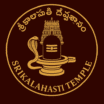Learn about the 12-day Brahmotsavam Festival at Sri Kalahasti Temple. Explore daily rituals, vahana processions, Rathotsavam, and spiritual importance.
The Brahmotsavam Festival at Sri Kalahasti Temple is one of the most glorious and spiritually uplifting events celebrated in honor of Lord Kalahasteeswara (Lord Shiva) and Goddess Gnana Prasunambika Devi.
It is believed that Lord Brahma himself first conducted this grand festival at this sacred site, giving it the name “Brahmotsavam” — meaning “Festival conducted by Brahma.”
Every year, this festival draws thousands of devotees from Andhra Pradesh, Tamil Nadu, Karnataka, and across India, who come to witness the divine energy and traditional splendor of the celebrations.
📅 When is Brahmotsavam Celebrated?
The Sri Kalahasti Temple Brahmotsavam is held once a year, generally during the month of March or April (Chaitra Masam in the Hindu calendar).
The festival lasts for 12 days, with each day dedicated to a unique vahana (divine vehicle) procession and ritual significance.
The event coincides closely with Maha Shivaratri, symbolizing Lord Shiva’s cosmic dance and divine grace upon the devotees.
Brahmotsavam is the highlight of the temple calendar. For more events in the year, check the Major Festivals page.
🌸 Spiritual Significance of Brahmotsavam
- Brahmotsavam is said to be initiated by Lord Brahma to please Lord Shiva.
- The festival marks universal creation and divine order, emphasizing the importance of devotion, humility, and selfless service.
- Each vahana (vehicle) used during the festival represents a symbolic spiritual message — from power and purity to wisdom and compassion.
“It is believed that witnessing Brahmotsavam at Sri Kalahasti grants blessings equivalent to visiting all five Panchabhoota Lingas.”
📜 Brahmotsavam Festival Schedule
Below is the general 12-day schedule followed every year during the festival:
| Day | Event Name | Highlights / Rituals |
|---|---|---|
| Day 1 | Dwajarohanam (Flag Hoisting) | Temple flag is hoisted, marking the divine invitation to all gods to participate. |
| Day 2 | Nandi Vahanam Seva | Lord Shiva is taken in procession on His sacred bull, Nandi. Symbolizes strength and truth. |
| Day 3 | Hamsa Vahanam | Lord rides the Swan, representing purity and wisdom. |
| Day 4 | Simha Vahanam | Symbolizes courage and victory over evil forces. |
| Day 5 | Gaja Vahanam | Elephant mount signifies royal power and prosperity. |
| Day 6 | Sesha Vahanam | Lord appears on Adisesha (divine serpent), symbolizing cosmic energy. |
| Day 7 | Hanumantha Vahanam | Devotion and service are honored as Lord rides Hanuman. |
| Day 8 | Rishabha Vahanam | Sacred bull procession during the night; devotees chant Rudra hymns. |
| Day 9 | Chandra Prabha Vahanam | Silver chariot procession under the moonlight; symbolizes peace and calmness. |
| Day 10 | Rathotsavam (Chariot Festival) | The grandest day — the deity is taken in a huge wooden chariot around the temple streets. |
| Day 11 | Teppotsavam (Float Festival) | Deity taken on a decorated float in Swarnamukhi River. Divine musical celebrations follow. |
| Day 12 | Chakrasnanam & Dhwajavarohanam | Sacred bath and lowering of temple flag mark the conclusion of the festival. |
🛕 Rituals & Processions
Each day begins with Suprabhata Seva, Abhishekam, and Archana.
After the morning pooja, the deity is taken on different vahanas (vehicles) around the temple in both morning and evening processions.
Priests recite Vedic hymns while musicians play nadaswaram and mridangam as thousands of devotees line up to catch a glimpse of Lord Kalahasteeswara.
Devotees light lamps along the four temple streets (Mada Veedhis), creating a spectacular and devotional ambiance.
🎶 Cultural & Spiritual Events During Brahmotsavam
- Classical music and dance performances are organized every evening.
- Spiritual discourses (pravachanams) are held by Vedic scholars.
- Devotees participate in Annadanam (free meal service) throughout the 12 days.
- Traditional art and handicraft stalls are set up around the temple premises.
The entire town of Kalahasti transforms into a spiritual festival ground, echoing with the chants of “Hara Hara Mahadeva!”
🌿 Special Features of Sri Kalahasti Brahmotsavam
- Main deity: Lord Kalahasteeswara (Shiva as Vayu Linga).
- Goddess: Gnana Prasunambika Devi.
- Location: Sri Kalahasti, Chittoor District, Andhra Pradesh.
- Duration: 12 Days (Chaitra Masam).
- Timings: 4:00 AM to 10:00 PM (extended during main processions).
- Entry Fee: Free for general darshan; special pooja tickets available at temple counters.
🪔 Rathotsavam (Chariot Festival)
The Rathotsavam or Car Festival is the main highlight of Brahmotsavam.
The huge chariot, decorated with flowers and lamps, carries Lord Kalahasteeswara and Goddess Prasunambika Devi through the four temple streets.
Thousands of devotees pull the chariot with devotion, chanting “Om Namah Shivaya”.
The air fills with the sound of bells, drums, and conch shells — a once-in-a-year spectacle of devotion and unity.
🌊 Teppotsavam (Float Festival)
On the 11th day, the idols are placed on a beautifully decorated float and taken around the Swarnamukhi River.
The reflection of lamps on the water and the chanting of Vedas make it a divine sight.
This marks the symbolic conclusion of the festival, representing the return of the gods to their celestial abodes.
🧘 Spiritual Benefits of Attending Brahmotsavam
✅ Brings peace, prosperity, and protection from negative energies.
✅ Removes sins accumulated from previous births.
✅ Strengthens family harmony and mental clarity.
✅ Performing abhishekam or lighting lamps during this festival grants divine blessings of Lord Shiva.
“Those who witness the Brahmotsavam at Kalahasti once in their lifetime are believed to receive the full grace of Lord Shiva.”
📸 Visitor Information
- Best Time to Visit: During Brahmotsavam (March–April).
- Dress Code: Traditional attire (Dhoti for men, Saree for women).
- Photography: Restricted inside sanctum; allowed during outer processions.
- Nearest Stay: Bhudevi Complex, Subrahmanya Guesthouse, and nearby private hotels.
- After attending vahana sevas, many devotees buy prasadam for family. See Prasadam & Official Shops for counters and timings.
